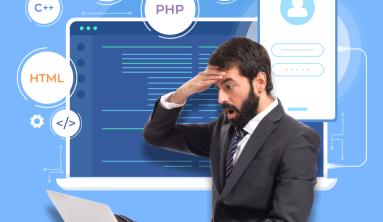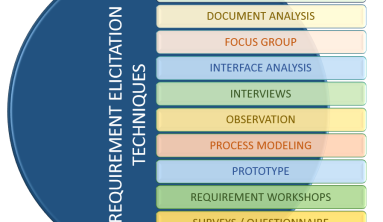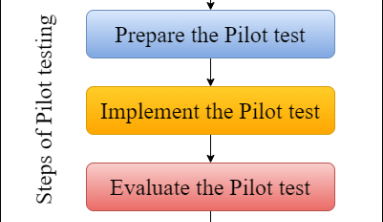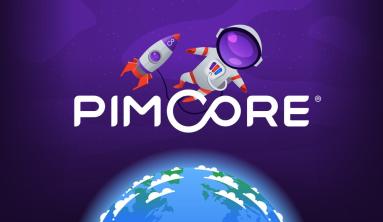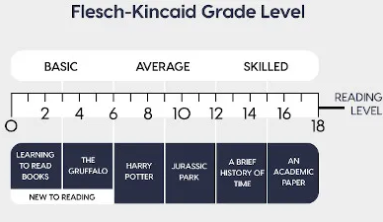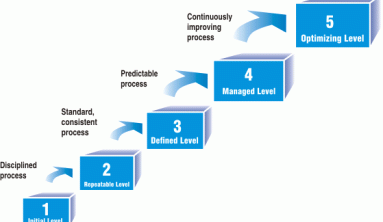The time to choose a headless CMS over a traditional CMS couldn't be more clear. Gabriella Pirrone Gabriella Pirrone September 9, 2019 Headless CMS vs Traditional CMS There are some very clear and obvious benefits to the notion of content management. Those benefits have been praised by traditional CMS vendors for years and helped to bring on the initial web 2.0 revolution. That was a long time ago, and while the tools and methodologies that we use have undergone many stages of evolution and revolutions, the traditional CMS industry has not. Enter headless CMS, once a scrappy upstart, now a mature offering from several well-established firms.

70% of marketers are actively investing in content marketing. That statistic alone (and there is way more stats here)tells you just how powerful most marketers believe content marketing is, but 24% of marketers are planning on increasing their investment in content this year.
In the meantime, Marketers used to look at a website as something that stood on its own, almost unrelated to content. Right through from the early stages of procurement, into development and onto deployment, getting a website built and running was very much a waterfall-type strategy. Get it done and paid for. Get the development team out of there and get the content team in after. Set up a process for ongoing content entry and approvals. Done. Set it and forget it.
That process has held true for a long time, and the CMS industry has added a plethora of features on top of that one-and-done process. It’s quite often found that to adopt these new features, a complete rebuild of the website would be needed, and many times this would coincide either with a new version of the CMS platform or choosing a new CMS platform.
As CMS vendors have added more and more features, they've become bloated. A new user just getting on board one of these platforms has a steep learning curve to be productive. Add the complexity inherent in a large web property, and things get even more difficult to maintain and work with.
Eventually, the industry has arrived to the notion of Content First Methodology. Headless CMSs allow you to change your mindset and think of content strategy first, - content before design. This approach is not only sensical, but also economical. It save you both time and money.
The time to choose a headless CMS over a traditional CMS couldn't be more clear. Let’s explore both options below and the top 10 considerations as to why you should consider going “headless”.
What is a Headless CMS?
Contrary to a traditional CMS, a headless CMS is entirely decoupled from the presentation layer/frontend, which in this case is the “head”, and the backend is your content repository, known as the “body”. When you separate your content repository “body” from its presentation layer “head,” it becomes a headless CMS. What truly makes a headless CMS better than a traditional CMS is its content-first approach with full APIs to access and display content in any way desired. With this approach, a headless CMS enables you to author your content through the RESTful API and deliver that content wherever you need it. Think of this as a one-and-done waterfall scenario. Headless CMS eliminates the "set it and forget it" approach to building software.

What is a Traditional CMS?
A traditional CMS is linked tightly between the front end and the back end. Content is created, managed, and stored—along with all of your digital assets—on the site’s back end. The back end is also where website design and customization applications are stored. The content management back end and database are bound within the same system that delivers and presents content to devices and end-users (front end). Basically, your editors are writing and publishing on the back end of the same system your website visitors are viewing. This can be a bit scary!

The caveats of Traditional CMS:
- Monolithic website architecture
- Set-it and forget-it content processes
- Bloated feature sets with a steep learning curve
Top 10 Reasons Why You Should Consider a Headless CMS vs Traditional CMS
Why is a headless CMS becoming so popular? Let’s dig into the top 10 reasons why you should consider adopting a headless CMS solution for your business.
Benefits of Headless CMS:
1. Headless CMS is easier, faster, and more flexible to develop on
Not only are you able to pick your programming language, but a headless CMS is also API driven so you can build your “head” (presentation layer/frontend) end to end. Your developers can develop the way they’re used to without having to conform to any proprietary development constraints. A single content item can be reused and combined with several different presentation outputs, allowing for projects to be completed faster. A webhook is user-defined by an HTTP callback (or small code snippets linked to a web application) that trigger action specific events. A headless CMS allows easy and secure integrations with any of your existing systems. This includes the use of webhooks. A webhook is user-defined by an HTTP callback (or small code snippets linked to a web application) that trigger action specific events. A prime example of a webhook is triggering an email to your user once they have paid for a subscription on your site. Another benefit is not having a fixed structure to develop or code. This allows your developers to build any code for any type of integration. Not only will your developer love the flexibility it gives them just from a resourcing side but to integrate with systems that are more complex to integrate with.
2. Headless CMS is future proof A headless
CMS allows you to future proof your application by separating your presentation layer from your data and logic layer. It allows you to structure your content to make new projects easier for future-proofing as well as when re-branding one or more channels, there are literally no technical changes required within the CMS. Developers adopt the headless CMS approach to the parts of their existing stack where it makes sense. They carve out pieces and use APIs to make it all work together.
3. Headless CMS supports omnichannel architectures
Omnichannel can pose quite a challenge for marketers because they need to create iconic content that shines across all touchpoints. Instead of managing each channel separately, a headless CMS provides the ability to orchestrate a seamless experience that spans to all touchpoints maintaining consistency and relevance. These challenges are compounded by the rising number of digital touchpoints and languages marketers must update in such a short period. A headless CMS removes those common barriers.
4. Headless CMS costs less
With little technical involvement required in a headless CMS, it’s a lot quicker for your business teams to create new functionality. For example, if a marketing department wishes to create a new series of product mini-sites, they can go straight into the CMS and start creating immediately without having to wait for developers to build CMS-based templates. Your up-front cost is diminished as well because you can start with smaller solutions and then build your way up versus starting with one BIG install. It’s best to start small and then scale up as you need to.
5. Headless CMS is more scalable
Since the back-end and front-end are separated, if the back-end CMS platform has any performance issues or needs maintenance, it won’t create any downtime to your website or compromise its performance. Your hosting options are unlimited with a headless CMS and deployment environments as well.
6. Headless CMS is easier to learn and use
Many will agree that the biggest benefit of a headless CMS is how easy and fast it is to manage your content. The CMS implementation is cleaner meaning the CMS tool is purely for storing content and isn’t cluttered with “stuff” that’s irrelevant to business users and other resources.
7. Headless CMS is evergreen (always up to date)
A huge benefit of a true, headless, multi-tenant system is that it's fully managed and upgraded for you. This is a huge benefit because upgrading can often be a costly project, not to mention that it's not very fun either so your team will be very happy to hear this benefit!
8. Headless CMS leads to better software architecture
A headless CMS provides better software architecture. A headless CMS is typically architected so that the CMS platform and the published content are separated. There are a huge number of benefits to this, including:
- Security: Access to the CMS is restructured internally within the organization, while content that is published outside is either approved for public consumption or can be secured/encrypted as required.
- Scalability: Need to add more servers to prop up demand for a particular application? Simply spin up a new app server and point it to the content.
- Availability: Should the CMS application go offline, there’s no impact to the web applications.
9. Headless CMS allows for a smaller, less specialized team
Companies no longer need large (and expensive) teams of specialist consultants who are knowledgeable in a particular CMS. Sure, some expertise is required, but not at the scale of a traditional CMS.
10. Headless CMS allows you to focus on your business
Spending all your time worrying about your CMS can take your attention away from growing your business. A traditional CMS can take away a lot of your precious resources.


